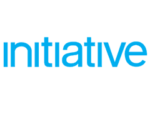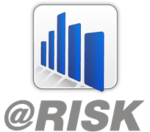Research
- General Research (47)
- High School Research (11)
This report is the tenth in a series of annual publications produced jointly by the National Center for Education Statistics (NCES), Institute of Education Sciences (IES), in the U.S. Department of Education, and the Bureau of Justice Statistics (BJS) in the U.S. Department of Justice. The indicators in this report are based on information drawn from a variety of data sources, including national surveys of students, teachers, and principals.
A 2005 report on how states are addressing the federal failure to fully fund afterschool programs.
This guide is designed to provide policy makers, program leaders, system building advocates and other with practical information on creating and maintaining public-private partnerships
We call on all federal, state, and local officials to implement this four-part plan to cut crime and violence. Doing so will help America’s children learn the values and skills they’ll need to become good neighbors and responsible adults. Across all ages there are effective programs. Some start before birth, others are proven to work with older kids, even serious juvenile offenders. While no plan can prevent every violent act, this common-sense approach, based on our experience and the latest research about what really works, can make all of us safer.
This brief illustrates the needs of children in high-risk families and neighborhoods for quality after school programs.
The Afterschool Alliance has updated its “Evaluations Backgrounder: A Summary of Formal Evaluations of Afterschool Programs’ Impact on Behavior, Safety and Family Life.” The update includes new data from ongoing evaluations of Citizen Schools, as well as recently released evaluations of After School Matters, CORAL, LA’s BEST, and more. Studies examining health benefits for students and families are also included. (Updated August 2008)
The Afterschool Alliance has updated its, “Evaluations Backgrounder: A Summary of Formal Evaluations of Afterschool Programs.” The update includes new data from ongoing evaluations of Citizen Schools, as well as recently released evaluations of After School Matters, CORAL, a state level evaluation of New Hampshire programs, and findings from two meta-analysis studies and a large-scale quasi-experimental study conducted by Deborah Lowe Vandell, Elizabeth Reisner and Kim Pierce. (Updated July 2008)
By Victor Battistich, Eric Schaps, and Nance Wilson
Published in The Journal of Primary Prevention, Vol. 24, No. 3, Spring 2004.
This research examined the effects at follow-up during middle school of a comprehensive elementary- school intervention program, the Child Development Project, designed to reduce risk and promote resilience among youth. Parental consent to participate in the middle school study was obtained for 1,246 students from six programs and six matched comparison elementary schools. Three of the program elementary schools were in the “high implementation” group, and three were in the “low implementation” group during the elementary school study. Findings indicated that, studywide, 40% of the outcome variables examined during middle school showed differences favoring program students, and there were no statistically reliable differences favoring comparison students. Among the “high implementation” group, 65% of the outcome variables showed differences favoring program students
A review of the operating costs of a quality out-of-school-time program. Specifically, it looks at measuring the full costs of programs, examining the relationship between cost and quality, and developing cost estimate models.
By Eric Schaps, Victor Battistich, and Daniel Solomon
Published in Building academic success on social and emotional learning: What does the research say? edited by J. Zins, R. Weissberg, M. Wang, & H. Walberg, 189–205. New York: Teachers College Press, 2004.
In the course of this work, it was found that helping schools to become a “caring community of learners” proved pivotal for enabling the full range of students to progress along these several dimensions of development. Along with other researchers, it is now a belief that this priority on community building in school provides a powerful focus for improving Caring Communities and Education educational practice, and especially for practice aimed at helping children to become caring, principled, and intrapersonally and interpersonally effective.
By Eric Schaps
Eric Schaps examines the positive effects of building community in schools amongst school age children, and how school involvement boosts grades and prevents risky behavior. Schap also provides various ways for schools and programs to improve community relations between school and students.
This report aims to put policymakers and program operators on firmer ground as they make these decisions by sharing lessons learned about the design and content of existing school-based, after-school programs.











